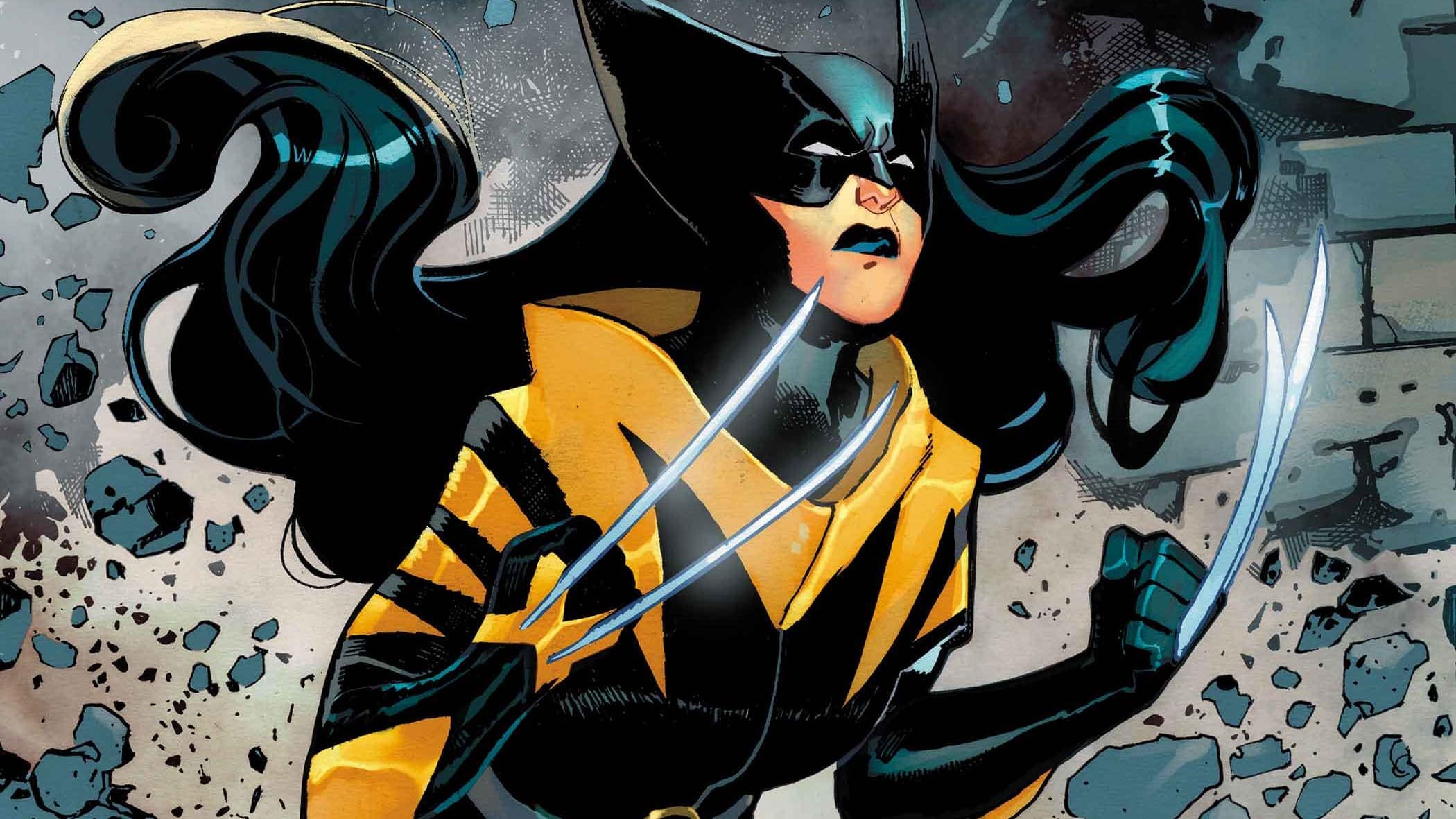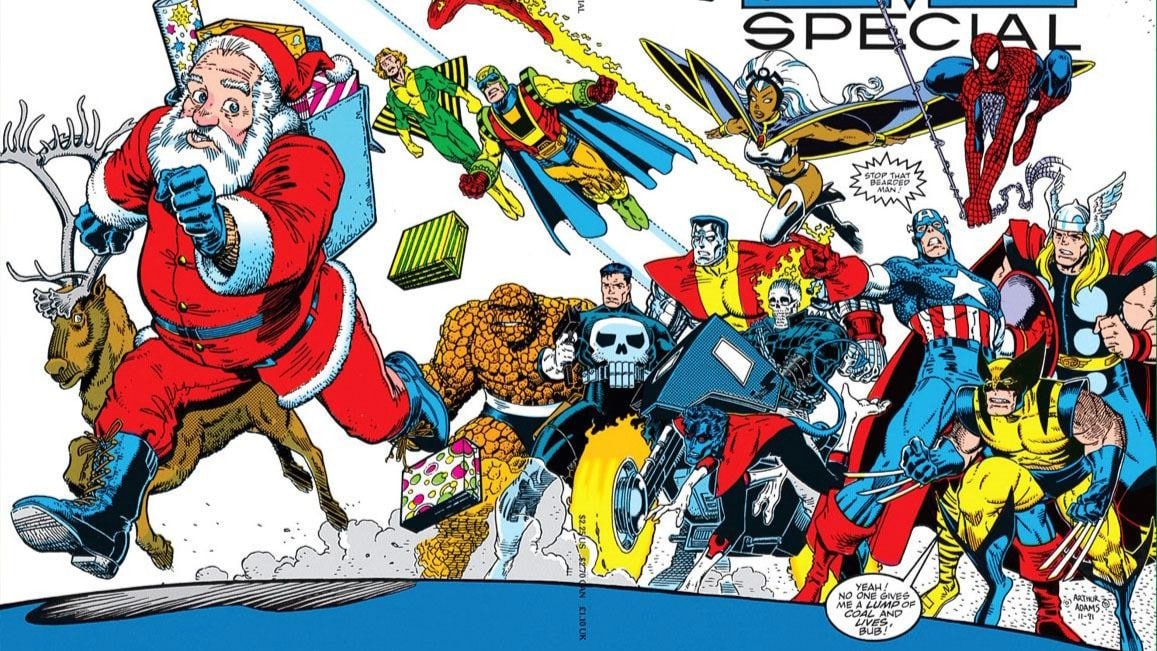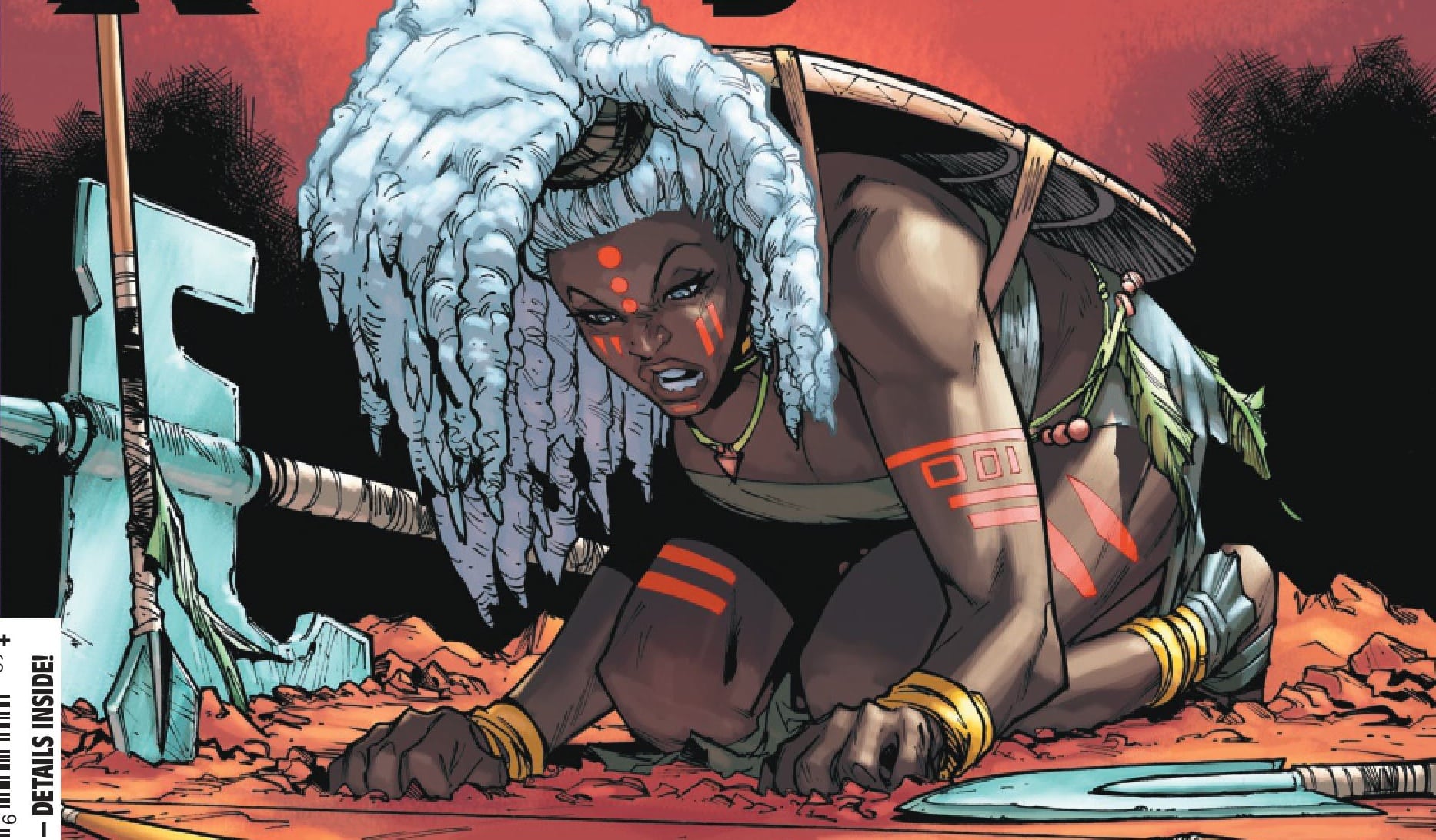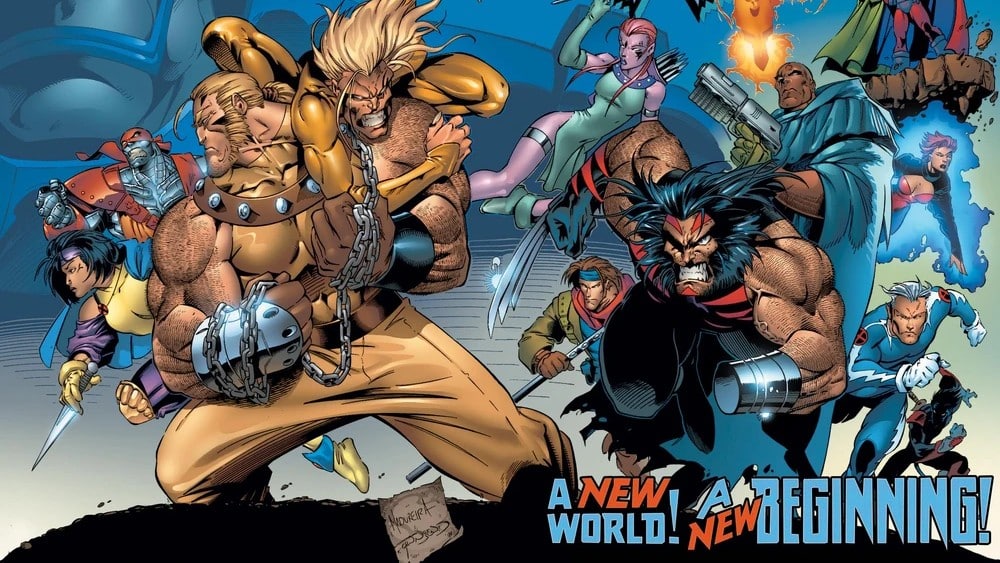Every day, mutants are being stolen off the streets of Manhattan — unprotected and forgotten by the human world. Now, a war-worn Wolverine will descend into New York’s criminal underworld to bring them back into the light. Who is the mysterious mutant fixer known only as Local? Can Laura Kinney stand alone against the dangerous forces working to control the future of the city’s mutants? What reality-bending threat waits in the night, already 10 steps ahead? The shadows of NYX are calling. What secrets will you find lurking in that neon darkness? NYX #2 is written by Jackson Lanzing and Collin Kelly, drawn by Francesco Mortarino, colored by Raul Angulo and lettered by Joe Sabino.
Jake Murray: Six new series and 11 issues into the From the Ashes era, NYX retains its place at the top of my personal power rankings coming into this issue. Where others have struggled to establish a sense of “newness,” to shake off the notion that we’re simply recycling old plots and concepts, NYX feels fresh and ambitious, and I’ve been looking forward to this second issue more and more as the weeks roll on. There was a lot to discuss in the first issue, Tony, but the upshot was that we were intrigued by the core premise, impressed by Francesco Mortarino’s rendering of NYC and inconclusive on characterization. Does that sound about right?
Tony Thornley: Yes, and I think it’s interesting. Our good friend Adam Reck talked about the debut issue of this series on this week’s Battle of the Atom, and I think he nailed it. This series is really the only one of the bunch that feels like it’s actually interacting with the history of the franchise. It’s a logical extension of Krakoa to From the Ashes.
The Lesson

Jake: To yours and Adam’s point, NYX #2’s biggest strength is how it builds on the core premise of the search for identity among a newly dispersed mutant diaspora from the first issue, but frames it in an entirely different way. Where Sophie Cuckoo and Kamala Khan sought and found community as a response to the fall of Krakoa, Laura Kinney has fallen back on the very Wolverine tendency to retreat into isolation, which is also a very common post-traumatic response in general. However, what this issue does really well is create a world with which the shadowy, solo vigilante approach is incompatible. Both New York and mutantkind are patchworks of diverse communities held together, often imperceptibly and precariously, by the sort of empathy created by shared history, circumstances and, more practically, proximity. This makes New York a perfect post-Krakoa setting because it’s both easy to lose and find oneself depending on an individual’s luck, ability and determination to connect with people around them.
Tony: This is a completely correct read here, but also, the Lanzing-Kelly Hivemind does something very fun as well. They’re exploring the establishment of these communities through a very specific narrative lens — the noir.
This issue isn’t just a Wolverine story, it’s a Wolverine story in which Laura is the hard-boiled detective trying to track down a missing person. The only thing missing is a femme fatale. It’s a great way to explore the setting, give the issue a unique spin from last issue and set up-slash-further a handful of plots. To what you said, Lanzing and Kelly are using the tropes to tell an entertaining story that can then turn around into having the double meaning.
Jake: The issue explores the wider issue of diaspora communities in a contemporary city the size and density of New York; of the difficulty in pulling a mutant community together after the trauma of a nation falling in a society where there is no shortage of people looking to exploit, appropriate or erase minority cultures. We see this through Local, who is on the one hand a mutant exploiting other mutants for criminal gain, and on the other a realist who is making the best of a challenging socioeconomic environment to ensure the survival of himself and his people. He, of course, is being exploited by Mr. Friend, aka Mojo, whose motivation is exploitation of mutants through a product that appropriates the powers of mutants and what makes them special through selling mutant growth hormone, playing into the replacement-theory paranoia of humans in this story.
Tony: I’m still trying to digest my feelings on Mojo being one of our antagonists. NYX’s themes of community and culture being co-opted by a TV producer doesn’t quite ring right here. I think I’m going to have to see where this story goes.
There’s a place there for turning Mojo into a mix of reality TV producer and social media influencer. This appearance didn’t do enough to really give us an understanding of what he’s doing. He was scary, sure, but in a generic way. He could have been just about any boogeyman, including completely new characters.
Also, Mr. Friend should have been Major Domo in disguise instead of an android/meat puppet.
The Lie

Jake: The thrust of this issue is Lanzing and Kelly distilling their grand theme of post-Krakoa diaspora and focusing it on Wolverine. The plot of the issue is designed to pose a very personal question of Laura: Does she have the strength to open her heart again, in fear of being let down? The issue demonstrates the folly of her initial response — to go it alone, to reject the offer of help from Kamala — because it’s easily undone by the ability of her adversaries to create community just by offering mutants what they most desire. On the surface, Local and Mr. Friend are providing them with the peace and security they need, but in reality they are just picking them off one by one.
Mojo outlines the importance of his story in giving mutant children a sense of hope, albeit a false one, and in doing so poses a challenge to Laura: to combat isolation, nihilism and hopelessness, she will have to establish strength through community. This can only be done through a good story, a narrative to bring the mutant diaspora together again. Laura begins to realize this at the end of the issue, yet she remains cynical. As she sits beaten and alone in an abandoned house in Bushwick, she considers the importance of telling this “lie.” Mortarino intersperses panels of her healing physically as she gets dressed to go out with panels of Kamala, Sophie and Anole dancing. They are the hope to her hopelessness, the belief to her doubt, her dancing partners in her elegant ballet of self-deception. I’ve no doubt she’ll be changed by this experience. There’s probably a separate question about how this scene works with the rest of the issue structurally, however.
Tony: I do have a little bit of frustration with it, though. Most of Laura’s existence has been defined by being a loner. But All-New Wolverine spent three years establishing Laura as a much more stable and emotionally well-rounded individual. It got rid of the trigger scent, it gave her a family, it let her grow from an anti-hero into a more purely heroic character. Krakoa continued that, but here it takes a pretty big departure. It’s almost more of a sideways or lateral move than a regression, but I still don’t think it’s a good move for her.
Laura has become one of the best characters in the X-Men landscape because of that growth and progression. Now, I’m not sure how All-New holds up on a reread, and our Editor Emeritus Zack Jenkins has talked before about how changing Laura from Wolverine’s clone daughter to his daughter-daughter could take away from her character growth, so yeah, it’s not perfect. But it’s the story in which Laura became her own thing, and not just the early 2000s take on a Wolverine girl.
It’s a step laterally at least, but might be a step backward. I mean, the whole living in a condemned building thing just did not fit her at all. And frankly, where’s Gabby? Gabby should be right there with her.
Jake: I agree in the sense that Laura’s story arc being centered on learning that perhaps loneliness isn’t the best way to live is a concept we’ve seen play out before. It’s a bit of a cliché for lone-wolf type characters, so I totally understand your reservations here. Having said that, I like the track the story is on, and the prospect of the light-and-shade character contrast with Kamala and what they could teach each other excites me. Perhaps I’m starting to accept the reality that character reversions are a feature of From the Ashes (and many other eras, by the way), so my mind is a little bit more open to examples that give us good stories than I would have been previously.
The Locale

Tony: This continues what the first issue established — holy cow, this issue has such a great sense of place and worldbuilding. It feels both firmly set in New York and also in this new Mutant Town (Has it officially gotten a name, actually?).
Jake: I don’t believe so, although now you’ve said that I can’t stop the Matt Berry-style voice in my head saying “New York Xitay” over and over again. Anyway, I continue to be really impressed by Mortarino’s sense of scene and setting. This issue is playing with the noir element in a way that’s really cool, best symbolized by Mammomax playing bouncer in a dimly lit alleyway wearing a trench coat and trilby. Colorist Raul Angulo’s pops of neon burst out of skyscraper and high-rise apartment windows, barely illuminating the rundown backstreets of the city beautifully, accentuating not just the wealth gap of the real New York but the contrast between the everyday struggle of the vulnerable mutants we see in this issue with the new, self-proclaimed “Quiet Council” we saw at the end of the first issue. Many of the panels throughout the issue are cut off around head height, creating a claustrophobic sense of social immobility, but each panel that does pan out does so intentionally. Whether it’s to get a look at the symbol of human power that is Empire State University or indeed the heights from which Laura has dropped herself, Lanzing and Kelly’s narrative captions and dialogue always draw specific attention to it. Very effective, in my view.
Tony: The sequence of Local and Wolverine speed running their fetch quest through New York did so much to establish the scene. If I didn’t know better, I’d think Kelly and Lanzing are New York locals, too. The entire creative team makes this feel real, to the point that I’m enjoying the scene setting as much as I’m enjoying the storytelling.
Jake: Same. Its groundedness is one of NYX’s greatest strengths, although there are instances of leaning into old tropes to give the series some extra grit, too
Tony: Can we back up to MGH, too? This just doesn’t make sense with Mojo and everything else. It’s a sore thumb sticking out from an otherwise very entertaining issue.
Jake: It does, and it does feel a little bit thrown in. It provides a simple explanation for what Mojo is using the kids for specifically, but it wouldn’t have been a problem to leave a little bit of the mystery unsolved right away. In any case, a strong second showing overall from a series I think we’re both excited to see more of.
X-traneous thoughts
- Editor Dan here, jumping in to say that Laura calling herself “Scratch” as her own version of Logan’s horribly veiled underworld alter ego “Patch” is brilliant. Now, can we take this one step further to where she dons a fake mustache and begins calling herself “Scratches Malone”?
Buy NYX #2 here. (Disclaimer: As an Amazon Associate, ComicsXF may earn from qualifying purchases.)







